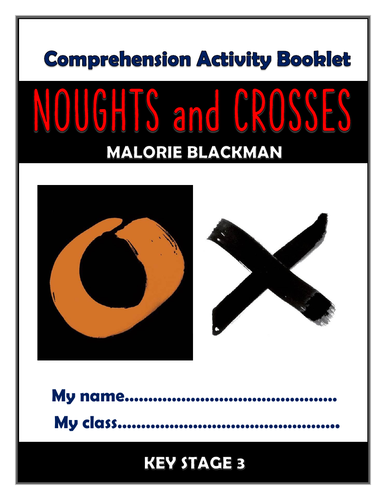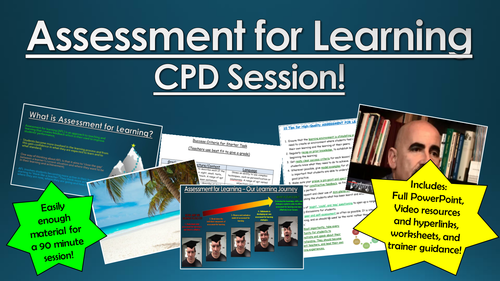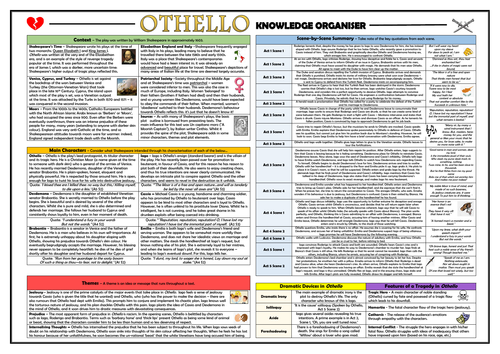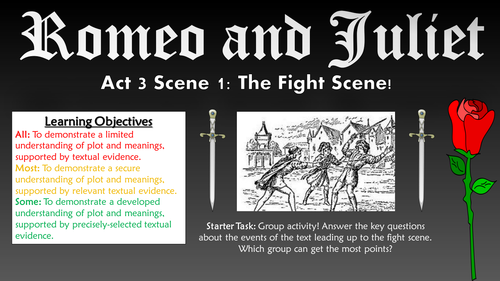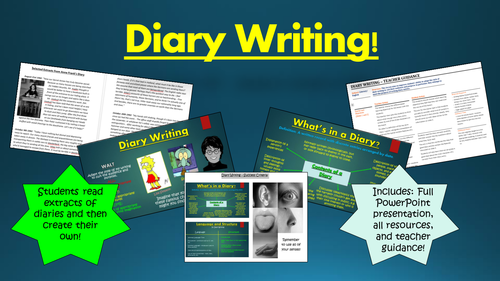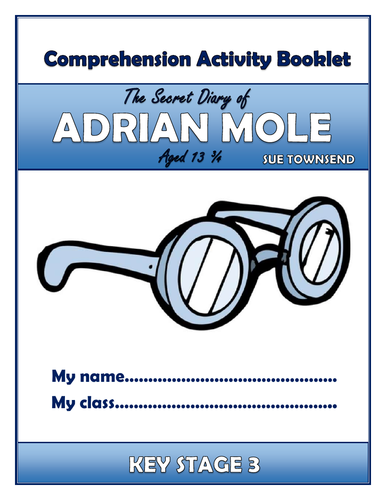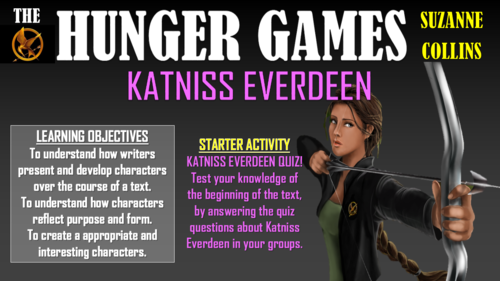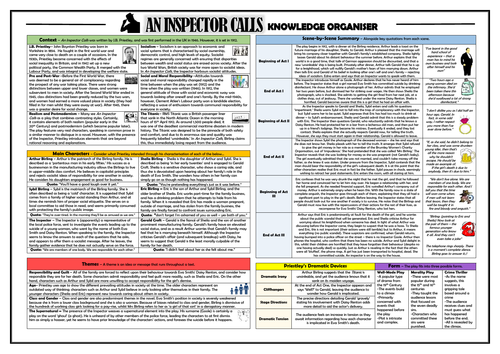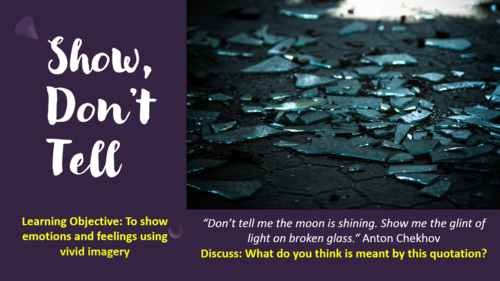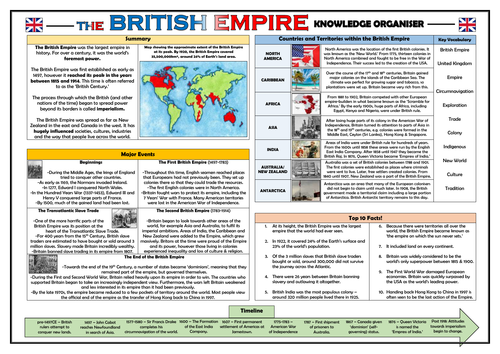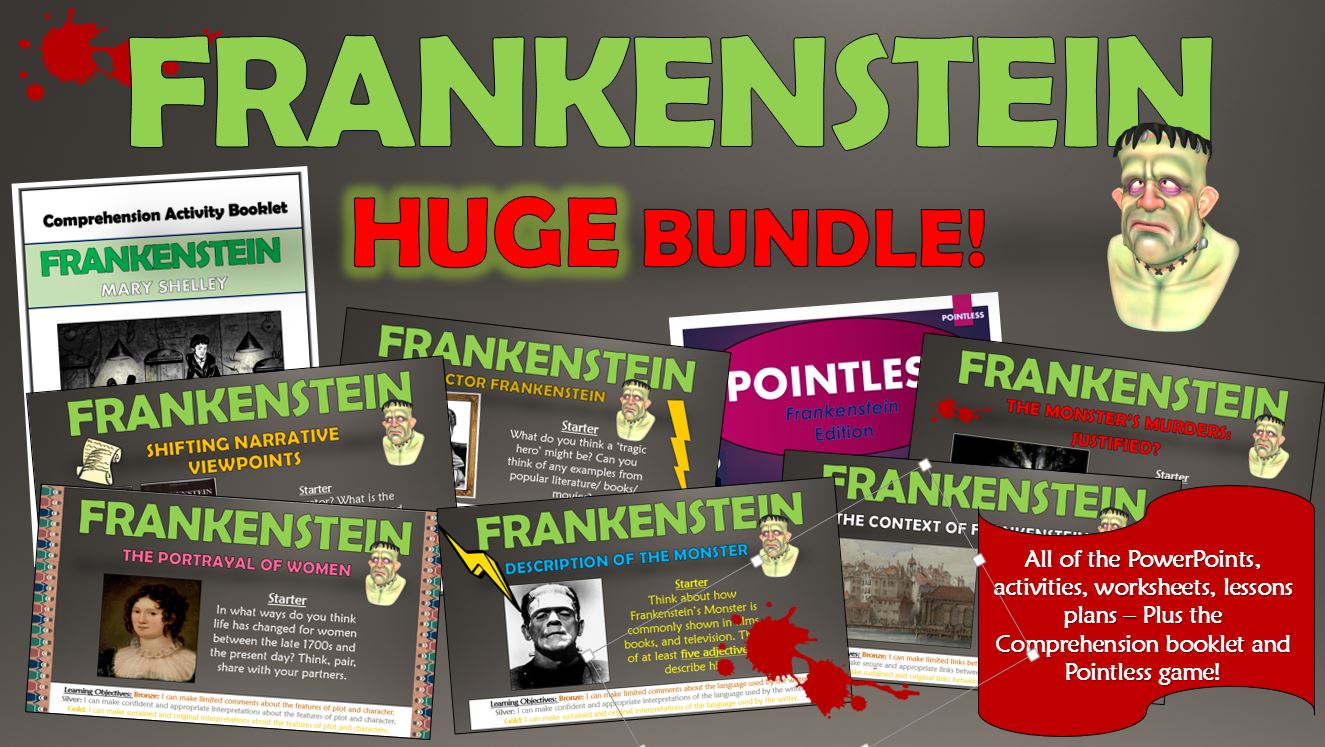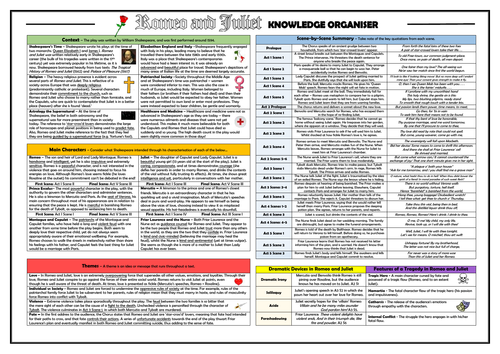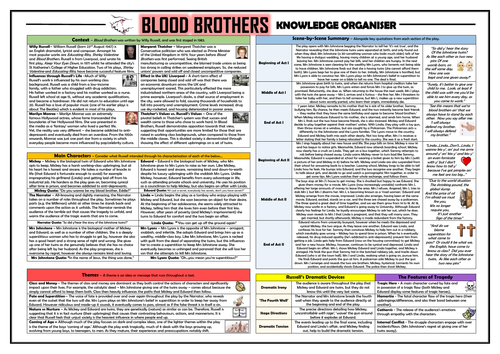
3k+Uploads
1906k+Views
2238k+Downloads
Whole school

Noughts and Crosses - KS3 Comprehension Activities Booklet!
This resource booklet contains a wide range of age-appropriate, engaging, and meaningful comprehension activities for use throughout the reading of Malorie Blackman’s ‘Noughts and Crosses.’ Teachers have found them particularly useful in comprehension or guided reading sessions. They are perfect for aiding the progress of children towards meeting the KS3 expectations within the National Curriculum framework. Children have found these resources extremely engaging, and for teachers there is explicit information within each task regarding which comprehension strands the task is designed to demonstrate. They also relate to key extracts, characters, and themes from the story, ensuring that children gain a deep understanding of the text.
Activities within the booklet include:
‘Blackman’s Description’ - to enable students to demonstrate that they can: ‘Know how language, including figurative language, vocabulary choice, grammar, text structure and organisational features, present meaning.’
‘Callum McGregor Character Profile’ - to enable students to demonstrate that they can: ‘Study setting, plot, and characterisation, and the effects of these.’
‘Context: Jim Crow Laws’ - to enable students to demonstrate that they can: ‘Know the purpose, audience and context of the writing and drawing on this knowledge to support comprehension.’
‘Vocabulary Inspector’ - to enable students to demonstrate that they can: ‘Learn new vocabulary, relating it explicitly to known vocabulary and understanding it with the help of context and dictionaries.’
Plus many, many more activities (the booklet is 23 pages in length!) I’ve also added it as a PDF in case the formatting differs on your computer.
All images are licensed for commercial use.
Bundle Sale

DT Mechanisms - Wheels and Axles Safari Buggies Big Bundle!
This engaging and purposeful series of lessons enables children to gradually develop towards constructing vehicles using wheels and axles. The resources were originally created to guide children towards building safari buggies, but the resources can easily be adapted to fit your own particular project.
The bundle contains five lessons and the knowledge organiser. The lessons included are:
Lesson 1 - Researching
Lesson 2 - Designing
Lesson 3 - Making
Lesson 4 - Constructing the Body
Lesson 5 - Evaluating
Comprehensive and colourful Powerpoint presentations, in addition to all of the worksheets/ templates needed.
These lessons were originally created for children in years 2 and 3, but may be adapted for slightly older and younger year groups.
Bundle Sale

The Curious Incident of the Dog in the Night-time - Big Bundle!
This resource bundle contains all of the ‘Curious Incident of the Dog in the Night-time’ lessons, the comprehension activities booklet and the knowledge organiser!
The engaging and thought-provoking series of lessons has been devised to provide students with a well-rounded, secure understanding of the text. The entire novel is broken down in to 7 double lesson packs, meaning that there is a total of 14 individual activity sets here.
The Opening Chapters (2-19);
Chapters 23 to 47
Chapters 53 to 83
Chapters 89 to 113
Chapters 127 to 157
Chapters 163 to 197
The End of the Novel (199 to 233).
The comprehensive and colourful PowerPoint presentations guide students through a wide range of activities, including those designed to enhance the following skills: retrieval, understanding vocabulary, inference, explanation, summarising, sequencing, analaysis and deeper thinking activities.
The resources are suitable for students in either KS3 or KS4, depending upon the individual context of the school and students.

Writing Newspaper Articles!
This interesting and engaging enables students to know what newspaper articles are and why people read them, understand the features that make effective newspaper articles, and write their own interesting and appropriate newspaper articles. In particular, students learn to use a range of appropriate features in writing their own newspaper articles, including facts and opinions, jargon, testimonies, and puns. There are easily enough resources here for 2 lessons on this topic.
Over the course of their learning journey, students:
- Define and exemplify what newspapers are;
- Understand why people read newspapers;
- Understand and categorise the different techniques used by newspapers;
- Identify the features of newspapers in model examples;
- Analyse the effect of techniques in newspapers upon the reader;
- Use a wide-range of techniques in writing their own newspaper articles;
- Peer and self assess each other's newspaper article attempts.
The resources include:
-Visually engaging whole-lesson PowerPoint;
-A colourful and helpful 'Writing Newspaper Articles' Help-Sheet;
-Techniques cards for defining the key key features of newspaper articles;
-Analysing newspaper articles worksheet;
-Blank newspaper article template;
-A model example of a newspaper article;
-Helpful and comprehensive step-by-step lesson plan.
All images are licensed for commercial use, and are cited on the final page of the slide.

Assessment for Learning CPD Session!
This CPD session offers an engaging and original approach to introducing or revisiting assessment for learning. Grounded in educational research, this CPD session is interactive, well-structured, and has been successfully tried and tested. The aim of the CPD session is to develop the knowledge, skills, and strategies needed in order to utilise assessment for learning even more effectively in lessons, and it achieves this by embarking upon the following learning journey:
1. Understand what assessment for learning is and why it is effective.
2. Break down the individual components of assessment for learning.
3. Observe and evaluate a model of assessment for learning
4. Collaborate in developing your own assessment for learning strategies.
Included in this pack are: Full PowerPoint presentation, videos for analysis, hyperlinks to Youtube videos, resources for CPD activities, instructions and guidance for trainers/ presenters.
All images and videos are licensed for commercial use, and are cited on the final slide.

Othello Knowledge Organiser/ Revision Mat!
This detailed and visually-appealing resource offers a complete reference point for students learning or revising William Shakespeare’s ‘Othello.’ It contains comprehensive sections on:
Context;
Scene by Scene Summary (with quotes);
Main Characters;
Themes;
Dramatic Devices;
Features of Tragedy.
Key words and ideas are underlined for easy reference. The resource is designed to be printed onto A3, and is provided as both a PDF and a Word version (so that you can edit if you want to). All images used are licensed for commercial use and are cited on a separate document (included).

Romeo and Juliet: Act 3 Scene 1 - The Fight Scene!
This interesting and engaging lesson enables students to gain a detailed understanding of the fight scene in William Shakespeare’s romantic tragedy Romeo and Juliet. Students learn to demonstrate a developed understanding of the plot and meanings throughout the scene, with the support of precisely-selected textual evidence. In particular, students consider Romeo's struggle between love and honour throughout the duration of the scene, and how social demands lead him towards his demise.
The lesson utilises a range of tasks, that require students to be attentive and interactive learners. It follows this learning journey:
- Establishing the events leading up to the fight, including a discussion regarding the characters and events that make a physical confrontation inevitable;
- Reading and interpreting Act III Scene I, interpreting and inferring the key meanings;
- Understanding the key themes throughout the scene, including Romeo's struggle between love and honour;
- More closely analysing the key meanings and developments within the scene;
- Peer/self evaluating the learning in the lesson.
Included in this resource pack are:
- A well-presented, thorough, and informative, whole-lesson PowerPoint presentation;
- Resources for the reading and interpreting activity - full scene transcript with space for notes;
- A closer analysis worksheet based upon Romeo's struggle;
- A template to help scaffold the main task, complete with P.E.E instructions;
- A challenging and thought-provoking worksheet, and an answer sheet for the teacher.
All images in this resource are licensed for commercial use, and are cited on the final slide of the lesson presentation.

Diary Writing!
This stimulating and informative lesson aims to improve students’ ability to adapt the style of their writing to suit their audience and purpose. In particular, they attempt to meet the purpose of writing diary entries.
Students follow a clear and logical learning journey, in which they:
-Define diaries and their key content features;
-Read extracts of diaries, and explain which content features different writers employ;
-Work collaboratively to ascertain the language and structure features of diary entries;
-Create a success criteria for effective diary writing (although a ready-made success criteria is included)
-Write a diary entry for a famous character from their favourite movie, using the techniques that they have learnt;
-Peer/self-assess their diary writing attempts.
There are enough resources here really for two lessons, including:
-Visually engaging whole-lesson PowerPoint;
-Diary extracts x 4 (Adian Mole, Anne Frank, etc.)
-What's in a Diary Entry worksheet;
-Success Criteria;
-Step-by-step lesson plan.
All images are licensed for commercial use, and are cited on the final page of the slide.

The Secret Diary of Adrian Mole Comprehension Activities Booklet!
This resource booklet contains a wide range of age-appropriate, engaging, and meaningful comprehension activities for use throughout the reading of Sue Townsend’s ‘The Secret Diary of Adrian Mole, Aged 13 3/4.’ Teachers have found them particularly useful in comprehension or guided reading sessions. They are perfect for aiding the progress of children towards meeting the KS3 expectations within the new National Curriculum framework. Children have found these resources extremely engaging, and for teachers there is explicit information within each task regarding which comprehension strands the task is designed to demonstrate. They also relate to key extracts, characters, and themes from the story, ensuring that children gain a deep understanding of the text.
Activities within the booklet include:
‘Context: 1980s Britain - to enable students to demonstrate that they can: ‘Know the purpose, audience and context of the writing and drawing on this knowledge to support comprehension.’
‘Townsend’s Language Devices’ - to enable students to demonstrate that they can: ‘Know how language, including figurative language, vocabulary choice, grammar, text structure and organisational features, present meaning.’
‘Bert Baxter Character Profile’ - to enable students to demonstrate that they can: ‘Study setting, plot, and characterisation, and the effects of these.’
‘Vocabulary Inspector’ - to enable students to demonstrate that they can: ‘Learn new vocabulary, relating it explicitly to known vocabulary and understanding it with the help of context and dictionaries.’
Plus many, many more activities (the booklet is 23 pages in length!) I’ve also added it as a PDF in case the formatting differs on your computer.
All images are licensed for commercial use, and are cited on a separate document (included).

The Hunger Games - Katniss Everdeen!
This engaging and informative lesson enables students to understand how the lead protagonist of Suzanne Collins’ ‘The Hunger Games’ – Katniss Everdeen - develops as a character throughout the novel. In doing so, students learn how she develops and acquires the key skills, characteristics, beliefs, and values to become the complete dystopian heroine.
The lesson follows a step-by-step learning journey, in which children learn through:
Comprehending how Katniss is initially introduced to the reader;
Reading extracts from Chapters 3, 7 and 14 of The Hunger Games, identifying how Katniss’ character develops;
Analysing how her character fits the role of the ‘Dystopian Hero/Heroine’, and matching her traits to the different features of this character form;
Applying their understanding by creating their own Dystopian Hero/Heroine;
Self assessing their learning attempts.
Included is:
Whole lesson PowerPoint - colourful and comprehensive;’
Extracts from The Hunger Games (from Chapters 3, 7, and 14);
Character Profile for Katniss Everdeen;
Blank Template for Creating a Dystopian Hero/Heroine;
A comprehensive lesson plan;
All resources are provided in Word (for easy editing) and PDF (to ensure formatting remains fixed between different computers).
There are also opportunities for group learning, speaking and listening, peer assessment, and whole class discussion. I originally used these resources with year 8 classes, however colleagues have used them for between years 5 and 10 with some adaptations.
All images are licensed for commercial use, and image rights are listed on the last page of the presentation.

An Inspector Calls Knowledge Organiser/ Revision Mat!
This detailed and visually-appealing resource offers a complete reference point for students learning or revising J.B. Priestley's 'An Inspector Calls.' It contains comprehensive sections on:
- Context;
- Scene by Scene Summary (with quotes);
- Main Characters;
- Themes;
- Priestley's Dramatic Devices;
- Features of Form.
Key words and ideas are underlined for easy reference. The resource is designed to be printed onto A3, and is provided as both a PDF and a Word version (so that you can edit if you want to). All images used are licensed for commercial use and are cited on a separate document (included).

Show, Don't Tell - Writing About Emotions!
This engaging and highly-purposeful lesson enables children to write about emotions and feelings using vivid imagery.
Children learn how to show, not tell in their writing, focusing on precise details relating the senses. This helps to make their writing more immersive - painting an image in the mind of the reader with their words.
Children learn through:
-Defining and understanding what is meant by showing, not telling;
-Considering how each of the major emotions/ feelings can be shown;
-Turning their ‘showing’ simple sentences into compound and complex sentences;
-Editing and enhancing their showing sentences through consideration of precise verbs, adverbs and the use of analogies.
Provided in this resource pack are:
-Colourful and comprehensive PowerPoint presentation, offering a step-by-step guide through the lesson;
-Showing Emotions table template;
-Showing Emotions helpsheet (for LAP students).
The worksheets/ templates are provided as Word (for ease of editing) and PDF (to prevent formatting issues between devices).
The lesson was originally created for children in upper KS2, however with minor adaptations could easily be suitable for those in lower KS2 or lower KS3.

Building Resilience Assembly!
This assembly aims to assist children in becoming resilient learners who are more willing to approach tasks, keep trying when tasks become difficult, and learn from their mistakes.
I love giving this assembly because I feel that the key message within it is so vital. More importantly, wherever I have given this assembly (to a wide-range of students from a wide-range of contexts) it has always gone down extremely well, with students being extremely engaged and informing me of their increased resilience in the months that follow!
The slides are visually engaging and well-presented, and the subject matter is tailored to the interests and needs of young people. For example, there are references to Justin Bieber, Beyonce, Andy Murray, JK Rowling and a host of other successful people in the public eye who have needed to overcome difficulties. There is also a hyperlink to a music video which utilises a ‘Rude Goldberg Machine’ which has been painstakingly set up, through months of set-backs and sticking points, to achieve an extraordinary result.
The slides are fairly self-explanatory, but I’ve included guidance notes to assist the speaker. Hope that you find this useful!

Celebrating Differences Assembly!
This fun and original assembly aims to assist children in celebrating the differences between themselves and others, through:
-Understanding how diversity is needed in the world;
-Recognising and valuing the differences in their own school;
-Considering how kind words can help us to unite together.
I love leading this assembly, because I feel that the key message within it is so vital, especially in the present climate. More importantly, wherever I have presented this (to a wide-range of students from a wide-range of contexts) it has always gone down extremely well, with students being extremely engaged and informing me of the different ways in which they have celebrated differences in the months that follow!
The slides are visually engaging and well-presented, and the subject matter is tailored to the interests and needs of young people. For example, there are references to Prince Harry, Emma Watson, and others in popular culture, to help engage the children in the idea that each individual has their own strengths, weaknesses, like and dislikes, no matter who they are or how successful they appear.
There is also an exciting ‘toothpaste challenge’ included, which demonstrates the importance of ensuring that our words to others are kind and respectful. The challenge includes a hyperlink to a countdown clock. In addition to this, all other resources that you will need are provided in the pack.
The slides are fairly self-explanatory, but I’ve included guidance notes to assist the speaker. Hope that you find this useful!

The British Empire - Knowledge Organiser/ Revision Mat!
This clear, detailed and visually-appealing resource offers a complete reference point for students learning or revising knowledge relating to the British Empire. There are comprehensive sections on:
-British Empire Overview;
-British Empire Map;
-Major Events/ Stages;
-Timeline;
-Countries/ Territories in the British Empire;
-Key Vocabulary;
-Top Ten British Empire Facts.
The resource is designed to be printed onto A3 or A4, and is provided as both a PDF and a Word version (so that you can edit if you want to). All images used are licensed for commercial use and are cited on a separate document (included). It is most suitable for students in lower KS3/ upper KS2.

Churches - The Features of Churches!
In this lesson, students learn about the key features of Anglican churches.
Some of the features covered include: the font, the altar, the pulpit, the lecturn, the nave, the crucifix and stained glass windows. Students learn about the key purpose of the features, and where they can be found in the church.
Students also begin to comprehend what the features symbolise.
This resource pack contains a comprehensive 16-slide Powerpoint, alongside an eye-catching worksheet. Two extension activities are provided in order to challenge higher ability learners.
In the past, I have used this lesson with children from across Key Stage 2 - the key learning is aligned with NC expectations for RE, and also the content prescribed by most diocese regions. All images are licensed for commercial use, and are cited on the final slide.
Bundle Sale

Frankenstein Huge Bundle!
THIS BUNDLE CONTAINS ALL OF THE FRANKENSTEIN LESSONS, PLUS THE 30 PAGE COMPREHENSION BOOKLET, THE KNOWLEDGE ORGANISER AND THE POINTLESS GAME!
This engaging, varied, and informative scheme of learning is designed to help students gain a valuable understanding of Mary Shelley's horror classic 'Frankenstein.' The lessons enable students to gain a comprehensive understanding of the key features of plot, character, context, and language, in addition to considering the key themes and ideas running throughout the text.
All of the resources that you need are included in the bundle: informative and engaging whole lesson PowerPoints, worksheets, activities, and lesson plans.
The bundle is made up of a wide-range of interesting and exciting lessons, including:
- The Context of Frankenstein;
- Victor Frankenstein - The Tragic Hero;
- Shifting Narrative Viewpoints:
- Shelley's Description of the Monster;
- The Monster's Murders - Justified?
- The Frankenstein Pointless Game
- Frankenstein Comprehension Booklet
- Frankenstein Knowledge Organiser
Stimulating, visual, and easily adaptable, these lessons provide suggested learning objectives and outcomes for students of a wide-range of abilities - The vast majority of tasks are differentiated to allow for different abilities and needs in your classroom. Each lesson loosely follows this logical learning journey to ensure that students learn in bite-size steps:
- Engaging
- Defining/ Understanding
- Identifying/Remembering
- Analysing/ Creating
- Peer or self evaluating.
All of the lessons are interactive, employ a variety of different teaching and learning methods and styles, and are visually-engaging.

Romeo and Juliet Knowledge Organiser/ Revision Mat!
This detailed and visually-appealing resource offers a complete reference point for students learning or revising William Shakespeare's 'Romeo and Juliet.' It contains comprehensive sections on:
- Context;
- Scene by Scene Summary (with quotes);
- Main Characters;
- Themes;
- Dramatic Devices;
- Features of Tragedy.
Key words and ideas are underlined for easy reference. The resource is designed to be printed onto A3, and is provided as both a PDF and a Word version (so that you can edit if you want to). All images used are licensed for commercial use and are cited on a separate document (included).

Northern Lights Comprehension Activities Booklet!
This resource booklet contains a wide range of age-appropriate, engaging, and meaningful comprehension activities for use throughout the reading of Philip Pullman’s ‘Northern Lights.’ Teachers have found them particularly useful in comprehension or guided reading sessions. They are perfect for aiding the progress of children towards meeting the KS3 expectations within the new National Curriculum framework. Children have found these resources extremely engaging, and for teachers there is explicit information within each task regarding which comprehension strands the task is designed to demonstrate. They also relate to key extracts, characters, and themes from the story, ensuring that children gain a deep understanding of the text.
Activities within the booklet include:
‘Context: Religion’ - to enable students to demonstrate that they can: ‘Know the purpose, audience and context of the writing and drawing on this knowledge to support comprehension.’
‘Pullman’s Description’ - to enable students to demonstrate that they can: ‘Know how language, including figurative language, vocabulary choice, grammar, text structure and organisational features, present meaning.’
‘Lyra’s Character Profile’ - to enable students to demonstrate that they can: ‘Study setting, plot, and characterisation, and the effects of these.’
‘Vocabulary Inspector’ - to enable students to demonstrate that they can: ‘Learn new vocabulary, relating it explicitly to known vocabulary and understanding it with the help of context and dictionaries.’
Plus many, many more activities (the booklet is 23 pages in length!) I’ve also added it as a PDF in case the formatting differs on your computer.
All images are licensed for commercial use, and are cited on a separate document (included).

Blood Brothers Knowledge Organiser/ Revision Mat!
This detailed and visually-appealing resource offers a complete reference point for students learning or revising Willy Russell’s ‘Blood Brothers.’ It contains comprehensive sections on:
Context;
Scene by Scene Summary (with quotes);
Main Characters;
Themes;
Russell’s Dramatic Devices;
The Features of Tragedy.
Key words and ideas are underlined for easy reference. The resource is designed to be printed onto A3, and is provided as both a PDF and a Word version (so that you can edit if you want to). All images used are licensed for commercial use and are cited on a separate document (included).

